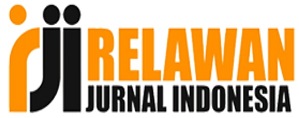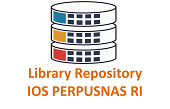DAMPAK PENERAPAN SISTEM E-PAJAK DAN KEKUATAN ISOMORFIK TERHADAP KEPATUHAN PAJAK
Abstract
Tax revenue can be optimized when taxpayers comply with tax regulations. The government is taking various initiatives to make it easier for taxpayers to fulfill their tax obligations, including the use of electronic tax payment systems. The purpose of this study is to analyze the effects of attitude toward electronic taxation, adoption of electronic taxation, and isomorphism intensity on tax compliance. The research sample consists of SME taxpayers in Magelang. Data were collected by questionnaire and analyzed using SEM-PLS. The results indicate that attitude toward electronic taxation has a positive but not significant impact on tax compliance. On the other hand, the introduction of electronic tax payment system and isomorphic intensity affect tax compliance. This study contributes to the literature on electronic tax systems and tax compliance.
Downloads
References
Alm, J., & Storm, R. K. (2019). Isomorphic Forces and Professional Soccer Standardizations: Instruments of Governance for Municipal Investments? International Journal of Public Administration, 42(3), 185–194. https://doi.org/10.1080/01900692.2017.1422746
Asianzu, E., & Maiga, G. (2012). A Consumer Based Model for Adoption of E-Tax Services in Uganda.
Davis, F. D., Bagozzi, R. P., & Warshaw, P. R. (1989). User acceptance of computer technology: A comparison of two theoretical models. Managelemnt Science, 35(8), 982–10003.
Depoers, F., & Jérôme, T. (2020). Coercive, normative, and mimetic isomorphisms as drivers of corporate tax disclosure: The case of the tax reconciliation. Journal of Applied Accounting Research, 21(1), 90–105. https://doi.org/10.1108/JAAR-04-2018-0048
Haryani, S., Motwani, B., & Matharu, S. K. (2015). Behavioral intention of taxpayers towards online tax filing in India: An empirical investigation. Journal of Business and Financia Affairs, 70–76.
Maisiba, G. J., & Atambo, W. (2016). Effects of electronic-tax system on the revenue collection efficiency of Kenya Revenue Authority: A case of Uasin Gishu County. Imperial Journal of Interdisciplinary Research (IJIR), 2(4), 815–827.
Muturi, H. M., & Kiarie, N. (2015). Effects of online tax system on tax compliance among small taxpayers in Meru County, Kenya. International Journal of Economics, Commece and Management, 3(12), 280–297.
Pratiwi, I., & Anggraeni, D. (2020). Pengaruh Sikap pada Sistem Pajak Elektronik terhadap Kepatuhan Pajak dengan Adopsi Sistem Pajak Elektronik sebagai Variabel Mediasi. JAKA (Jurnal Akuntansi, Keuangan, Dan Auditing), 1(2).
Ramdhani, D., Tamima, Z. A., Yanti, Y., & Effendi, B. (2022). Pengaruh Sikap Wajib Pajak Pada Sistem Pajak dan Sosialisasi Perpajakan Terhadap Kepatuhan Wajib Pajak Orang Pribadi Dengan Adopsi Sistem Pajak Elektronik Sebagai Variabel Mediasi Pada KPP Pratama Cilegon. Statera: Jurnal Akuntansi Dan Keuangan, 4(1), 37–58.
Sabil, S., Lestiningsih, A. S., & Pujiwidodo, D. (2018). Pengaruh E-SPT Pajak Penghasila Dan Pemahaman Pajak terhadap Kepatuhan Wajib Pajak. Jurnal Sikap, 2(2), 122–135.
Sadress, N., Orobia, L., & Opiso, J. (2018). Antecedents of tax compliance of small business enterprises : a developing country perspective. 24–44. https://doi.org/10.1108/IJLMA-10-2017-0234
Suhartono. (2010). Metode Penelitian Sosial Suatu Teknik Penelitian Bidang Kesejahteraan Sosial dan Ilmu Sosial Lainnya. PT. Remaja Rosdakarya.
Terkper, S. (2003). Managing Small and Medium-Size Taxpayers in Developing Economies. Tax Notes International, 29(2), 211–229.

This work is licensed under a Creative Commons Attribution 4.0 International License.







_uk501.png)

.2022-2026_uk200_pxl_.jpg)















.png)
3.png)


